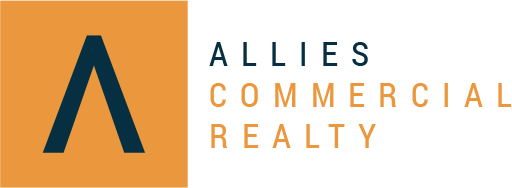Commercial Real Estate Investing: What do Class A, B, and C Property Ratings Mean?

Introduction
A crucial aspect of navigating the commercial real estate domain is comprehending property classifications, specifically Class A, B, and C ratings. These classifications function as indispensable tools, aiding investors in evaluating different properties’ quality, value, and potential returns. Understanding the nuances of these property classes holds significant importance as it guides investors in shaping their strategies, aligning with their risk tolerance, financial goals, and investment preferences. This article aims to explore the factors that differentiate these property classes, delve into their importance, delineate their respective advantages and disadvantages, and provide a guide to assist investors in determining the optimal property class for their investment objectives. By shedding light on these aspects, we empower investors to make informed decisions, ultimately optimizing their portfolios within the dynamic landscape of commercial real estate.
Determinants that Create Distinctions among Class A, B, and C Properties
Commercial property classifications are based on factors defining each property class’s quality, desirability, and functionality. Based on these factors, investors determine whether a property can be categorized as class A, B, or C. Some factors are given below:
Location
The location is a crucial determinant in categorizing different property classes. Class A properties are located in highly sought-after prime locations, ensuring superior access to amenities and boasting low crime rates. In contrast, Class B and C properties are situated in areas with either reasonable or limited accessibility to amenities and transportation.
Features and Amenities
Class-A properties often have amenities like fitness centers, conference rooms, valet parking, advanced security systems, upscale dining options, concierge services, etc. Class B properties balance quality and affordability by providing essential amenities, including on-site parking, security services, conference rooms for business meetings, and cafeteria-style or cafe dining options. However, class C properties often need more modern features and designs than higher-class properties. Properties of this class usually offer basic features that fulfill the fundamental requirements of tenants.
Property Age and Condition
Class A properties are typically newer or recently renovated buildings with modern design and state-of-the-art features. These properties are in excellent condition, having been meticulously maintained and updated to meet the highest standards. Class B properties, while less structurally modern or cutting-edge than Class A properties, still offer functional and comfortable spaces for tenants. These properties are typically older but have been well-maintained or renovated to improve their condition. Class C properties are the oldest among the classifications. They often show significant signs of aging and may need more infrastructure, mechanical systems, and design elements. Class C properties provide a more affordable option for investors willing to undertake the necessary improvements.
Tenant Profile and Rental Rates
Each class attracts a distinct type of tenant based on various attributes such as the property’s age, location, amenities, and rental rates. Due to their modern design and amenities, class-A properties are known for attracting high-profile and well-established tenants willing to pay premium rental rates. These tenants often include large corporations, prestigious firms, and businesses with strong financial credentials. They often have strong financial stability and seek prestigious and well-maintained spaces. Due to high demand, these properties usually have low vacancies. Class B properties provide a more moderate rental rate than Class A, making them appealing to businesses that value practicality and are willing to compromise on some premium features to control leasing costs. The tenant profile for Class C properties often includes firms that are more flexible in their space requirements, looking for short-term leases, or willing to invest in some property improvements to meet their specific needs.
Characteristics
Though no universal rules define each property class, some general characteristics can be observed. Below, we discussed some common characteristics of Class A, B, and C properties:
Class A Properties
Newer Properties: Class A properties are the new ones typically built within the last 10-15 years.
Prime Locations: These properties are strategically located in highly desirable and prestigious areas with low crime rates. In this location, they have excellent access to amenities, transportation facilities, and major services.
Superior Construction: Class A properties showcase outstanding construction, utilizing premium materials to guarantee structural integrity and long-lasting durability. Infused with the latest technological advancements, these properties guarantee state-of-the-art features and systems, setting a benchmark for commercial real estate industry excellence.
Premium Facilities: Class A properties are renowned for providing an abundant and all-encompassing array of amenities, fostering a high-quality and prestigious atmosphere. These include lavish features such as state-of-the-art security systems, on-site upscale dining facilities, well-maintained outdoor areas, and integration of smart building technologies. These offerings collectively create a premium and comfortable environment, appealing to high-profile tenants seeking a sophisticated workplace or living space.
Premium Lease Rates: Class A properties demand premium lease rates, reflecting their prime locations in prestigious areas, luxurious amenities, cutting-edge construction, and sophisticated features.
Professional Management: Professional and specialized property management teams are commonly employed in Class A properties, utilizing state-of-the-art property management technologies to ensure streamlined and efficient operations. These properties uphold a standard of excellence, promptly addressing maintenance concerns to maintain their well-kept appearance and functionality.
Class B Properties
Moderate Age: Class B properties fall into an intermediate age category, older than Class A, usually built within the last 10-30 years. While not freshly constructed, they maintain structural integrity and are consistently well-maintained.
Reasonable Location: Class B properties offer access to useful amenities and transportation in established neighborhoods. These areas typically report low incidents of crime.
Reliable Construction Foundation: Class B properties, a tier below Class A, are characterized by solid construction employing durable materials for long-lasting structural integrity. These properties might undergo renovations to enhance their construction or introduce modern features, providing a blend of quality and affordability.
Functional Amenities: Class B properties, though not reaching the luxury levels of Class A, commonly provide practical amenities that emphasize functionality and cost-effectiveness. These often include on-site parking, security services, conference rooms for business meetings, and cafeteria-style or cafe dining options.
Moderate Lease Rates: Class B spaces offer a middle ground between quality and affordability, making them enticing for businesses seeking functional environments without shouldering the premium costs seen in higher-class properties.
Property Management: The management of Class B properties often involves more proactive engagement, considering potential renovations, maintenance tasks, and tenant turnover. Property managers for Class B properties face balancing cost-effective maintenance measures and strategic improvements to enhance the property’s appeal and optimize rental rates.
Which property class fits your strategy? Reach out to us to discuss.
Schedule a Discovery CallClass C Properties
Older Age: These buildings are typically older, exhibiting signs of aging and possibly featuring outdated infrastructure requiring substantial renovations to meet contemporary standards.
Less Favorable Location: Class C properties are positioned in areas with less access to transit and modern conveniences, exhibiting a higher crime incidence than Class A and Class B locations. Despite the less desirable location, properties in this class present a more budget-friendly choice for investors who prioritize affordability over the premium associated with prime locations.
Fundamental Construction: Class C properties use only essential construction materials, prioritizing functionality over luxurious or advanced elements. These properties don’t have the intricate architectural elements and aesthetic features commonly found in higher-class counterparts. Meeting contemporary expectations may necessitate additional maintenance and renovations for properties within this classification.
Essential Amenities: They lack access to the luxurious features of Class A and some practical aspects of Class B. Instead, they typically provide basic amenities such as on-site parking or nearby options, simple security measures, and other straightforward facilities catering to businesses with budget constraints and more flexible space requirements.
Budget-Friendly Lease Rates: Class C properties present a cost-effective option with affordable lease rates. The lower lease rates cater to businesses with budget constraints, providing an accessible entry point into the commercial real estate market for cost-conscious tenants.
Property Management: Managing Class C properties often involves more comprehensive efforts due to their age, condition, and the possibility of a lower-income tenant base. Given the older age of Class C properties and potential deferred maintenance, property managers may need to address more frequent repairs and retrofitting tasks to ensure the property’s sustained functionality and appeal.
Choosing A Property Class to Invest in: Aspects to Consider
It’s worth emphasizing that there is no inherent superiority of one commercial real estate property class over another; even though distinctions in quality exist among decisions on which property class to invest in, it is crucial to take into account several considerations, such as risks, appreciation potential, market conditions, investors’ financial goals, etc. Investors frequently diversify their portfolios by carefully evaluating these aspects that steer them toward selecting a property class aligned with their investment strategy. This ensures the chosen property aligns with their financial objectives and suits their risk tolerance.
Risk
Due to prime locations, high-quality tenants, and modern amenities, Class A properties are often perceived as carrying lower risk. The properties of this class have a consistent appeal to stable and creditworthy tenants, which acts as a protective factor, mitigating the potential for vacancies and rent defaults. However, it’s essential to acknowledge that instances of prolonged vacancies in Class A properties can lead to rapidly accumulating costs, or during economic recessions, Class A properties may experience sensitivity, mainly if there is a surge in unemployment among high-income earners. Therefore, investors with a higher risk tolerance are deemed better suited for Class A properties, understanding the potential challenges of maintaining large vacant properties. The risk associated with Class B properties is moderate. Despite the potential for increased management involvement and a higher chance of vacancies or maintenance issues, investors can expect consistent returns with a balanced risk profile. Class C properties typically entail elevated risk levels due to their age, location, and potentially lower-income tenant base, often necessitating considerable maintenance. The likelihood of vacancies and turnover is higher within the Class C category.
Value Appreciation
Class A properties might experience limited appreciation potential since they are considered top-tier assets. Class B properties can be appreciated by implementing strategic renovations and improving the property’s condition. Class C properties may exhibit higher appreciation potential, particularly in revitalization areas or with promising future development prospects.
Market Conditions
It is essential to analyze the current status of the commercial real estate market and its potential impact on your investment. Factors such as employment growth, population trends, and local economic conditions play a significant role in shaping the performance of your investment, emphasizing the need for thorough assessment and consideration.
Financial Goals
Considering an investor’s financial objectives is paramount in determining the suitable property class for investment. Class A properties are ideal for those pursuing prestige, stability, and long-term returns. Class B appeals to those seeking a balanced combination of strength and growth potential, often with moderate upfront costs. Class C properties may be more fitting for investors prioritizing higher cash flow or adding value through property improvements.
Conclusion
Diving into the realm of CRE investing can be a daunting task. Investors often face a spectrum of investment options, each with a risk and reward profile. In this intricate landscape, strategic decisions are the currency for success. Understanding the importance of Class A, B, and C property ratings is essential for making more informed decisions. Each property class has risks and opportunities, providing investors with options that align with their needs. Whether focusing on prestige and stability in Class A, seeking a balance of strength and growth in Class B, or exploring affordable options in Class C, commercial real estate brokerage firms like ours are here to guide you. We stand as your ally in navigating the complexities of commercial real estate, ensuring you make the right choices for your business.
Topic: Commercial Property Classifications
Still not sure which property class suits you? Talk to a broker today!
Talk to a Broker
About the Author - Adam Stephenson, CCIM, SIOR
With over a decade of experience in commercial real estate, Adam is a trusted advocate for privately held organizations, specializing in industrial properties across Central Indiana. Adam brings a wealth of expertise in tenant representation, lease negotiations, and strategic asset acquisitions. A graduate of Indiana University – Indianapolis with a degree in Business Management, he further distinguished himself by earning the prestigious CCIM & SIOR designations. His deep industry knowledge, client-focused approach, and commitment to delivering tailored solutions make his insights invaluable.
Download Our Free Resource:
2025 Edition - CRE Forecast:
Trends And Predictions For CRE.

You might also enjoy reading:
Cookies improve your browsing experience, deliver tailored ads or content, and assess our website traffic. If you click 'Accept All’ you are giving your consent for us to utilize cookies. Check our cookies policy here.
Adding {{itemName}} to cart
Added {{itemName}} to cart





















